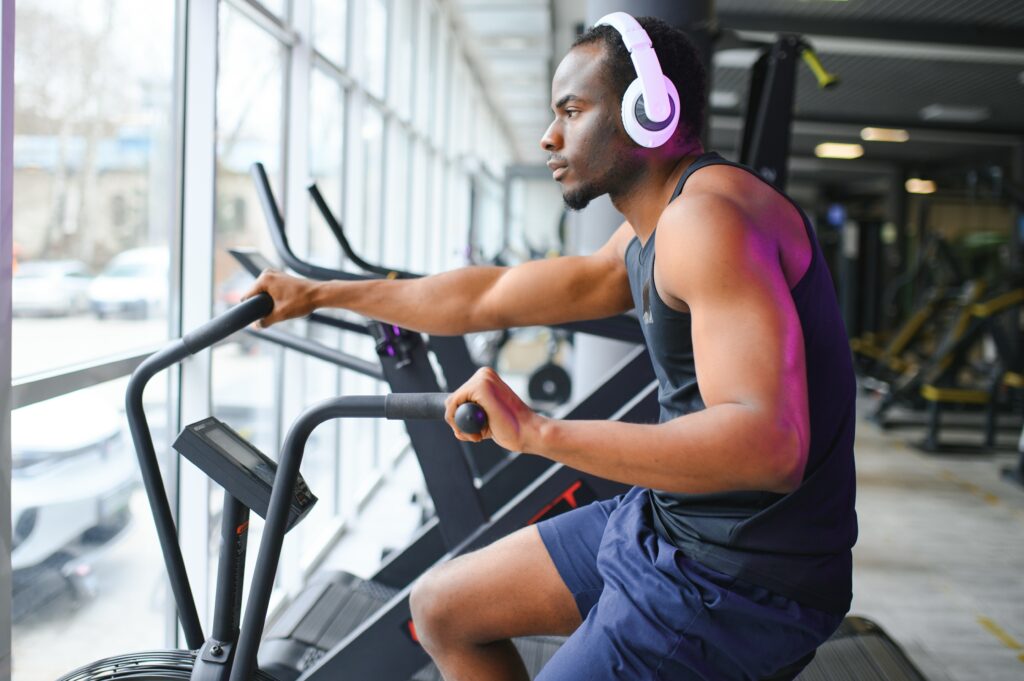Introduction: The Unexpected Cardio Trend in Strength Circles
Strength athletes are known for deadlifts, squats, and explosive lifts—not necessarily time spent on a treadmill. But recently, a quiet revolution is taking place in gyms and training circles. More lifters, power athletes, and even bodybuilders are incorporating Zone 2 training, a form of low-intensity steady-state cardio (LISS), into their weekly programming.
Why? Because science is showing that Zone 2 cardio isn’t just for endurance athletes—it may actually help strength athletes lift more, recover faster, and train harder.
What is Zone 2 Training?
Zone 2 training targets a specific heart rate range, typically 60-70% of your maximum heart rate (MHR). For most people, this falls around 110–135 beats per minute depending on age and fitness level.
It’s slow, steady, and controlled. Activities like brisk walking, light cycling, or incline treadmill walking fit the bill.
- Zone 1: Very light (recovery pace)
- Zone 2: Low intensity, aerobic (sweet spot for endurance & fat burn)
- Zone 3-5: Moderate to high intensity (anaerobic efforts, intervals, sprints)
The Science: How Zone 2 Enhances Strength Training
1. Improved Mitochondrial Efficiency
Zone 2 training enhances mitochondrial density and function—key to energy production and muscular endurance. A 2021 review in Frontiers in Physiology confirmed that low-intensity cardio improves aerobic base, which translates to better recovery between heavy sets and sessions.
Stronger mitochondria = better energy utilization and less fatigue.
2. Enhanced Recovery
Lifting heavy causes microtrauma to muscle tissues. Zone 2 cardio helps increase circulation, delivering oxygen and nutrients to muscles post-training. Studies show this type of cardio flushes metabolic waste and reduces inflammation, allowing for quicker recovery.
3. Fat Burning Without Muscle Loss
One of Zone 2’s major perks is its ability to tap into fat as a fuel source. Unlike HIIT or high-intensity cardio, it doesn’t spike cortisol or threaten muscle mass. This makes it ideal for body recomposition goals—adding muscle while reducing body fat.
4. Better Work Capacity
Strength isn’t just about how much weight you can move—it’s about how much work you can sustain over time. A better aerobic base built through Zone 2 lets you perform more sets, reps, and exercises per session with less cardiovascular fatigue.
How to Incorporate Zone 2 into Your Strength Plan
Here’s how to strategically add Zone 2 cardio into your weekly routine:
Frequency:
2–3 sessions per week
Duration:
30–45 minutes per session
Intensity:
Maintain a heart rate between 60–70% of your MHR
Quick formula: 220 – age = MHR
Zone 2 = ~60-70% of that number
Examples of Zone 2 Activities:
- Brisk incline walking
- Light cycling or stationary bike
- Rowing machine (low intensity)
- Hiking with a light pack
- Easy jogging (if experienced)

Sample Weekly Hybrid Training Plan
| Day | Training Focus |
|---|---|
| Monday | Upper Body Strength + 20-min Zone 2 (bike) |
| Tuesday | Lower Body Strength |
| Wednesday | 45-min Zone 2 (walk) |
| Thursday | Upper Body Hypertrophy |
| Friday | Lower Body Power + 20-min Zone 2 (rower) |
| Saturday | 45-min Zone 2 (hike or jog) |
| Sunday | Rest or light walk |
Who Should Use Zone 2 Training?
Zone 2 cardio is beneficial for:
- Powerlifters & Strength Athletes: Better recovery and work capacity
- Bodybuilders: Increased fat metabolism, improved conditioning
- CrossFit & Hybrid Trainers: Improved endurance and pacing
- Older Adults: Safe cardiovascular conditioning with low injury risk
- Anyone with Performance or Longevity Goals
Common Myths Debunked
❌ “Cardio kills gains.”
✅ Not true. Excessive HIIT or long-distance running may interfere with hypertrophy, but low-intensity cardio like Zone 2 supports gains by improving recovery and maintaining a leaner body composition.
❌ “Zone 2 is boring and doesn’t burn calories.”
✅ On the contrary, it burns mostly fat, and consistent sessions lead to increased fat oxidation and energy efficiency.
❌ “Only endurance athletes need Zone 2.”
✅ The aerobic system underpins all energy systems. Even sprinters and power athletes benefit from a stronger aerobic engine.
Real-World Evidence: Top Athletes Are On Board
- Hybrid athletes like Fergus Crawley and Nick Bare swear by Zone 2 for improving both strength and endurance simultaneously.
- Olympic weightlifters and powerlifters are integrating Zone 2 to help with longer sessions and better rest between heavy sets.
- Even bodybuilders are choosing Zone 2 over HIIT to stay lean while preserving muscle.
Final Thoughts: Train Smart, Not Just Hard
Zone 2 cardio may not look intense, but its benefits are anything but weak. When paired with a structured strength training plan, it can elevate your endurance, support your recovery, and amplify your results in the gym. Whether you’re chasing PRs, a leaner physique, or improved health, don’t underestimate the power of this quiet strength builder.
Call to Action
Ready to combine strength and stamina? Use the Jefit app to log both your lifting sessions and Zone 2 workouts. With custom templates, heart rate tracking, and performance analytics, you’ll stay accountable and build your best body—stronger and smarter.
Jefit: Embrace the Grind
If you’re serious about building muscle, tracking workouts, and reaching your fitness goals in 2025, the Jefit strength training app is the perfect tool to help you succeed. With over 20 million downloads and 12+ million users, Jefit is one of the best tracking apps for strength training. Recognized as the Best Fitness App of 2024 and featured in Men’s Health, PC Magazine, and USA TODAY, Jefit stands out with its user-friendly design, advanced workout tracking, and over 42,000 five-star ratings. Whether your goal is to gain strength, track progress, or optimize protein intake, Jefit has everything you need. Remember, sustainable progress is built on consistency, science, and patience.
References
- Brooks, G. A. (2020). The Science and Translation of Lactate Shuttle Theory. Cell Metabolism.
- Berryman, N., Mujika, I., et al. (2018). Strength and Endurance Training Adaptations. Sports Medicine.
- Coyle, E.F. (1995). Integration of the physiological factors determining endurance performance. Exercise and Sport Sciences Reviews.
- Nutrition Trends Bodybuilders are Talking About in 2025 - November 26, 2025
- Smart Strength Training Backed by Jefit Data - November 19, 2025
- Break Through Strength Plateaus: JEFIT Guide - November 12, 2025
